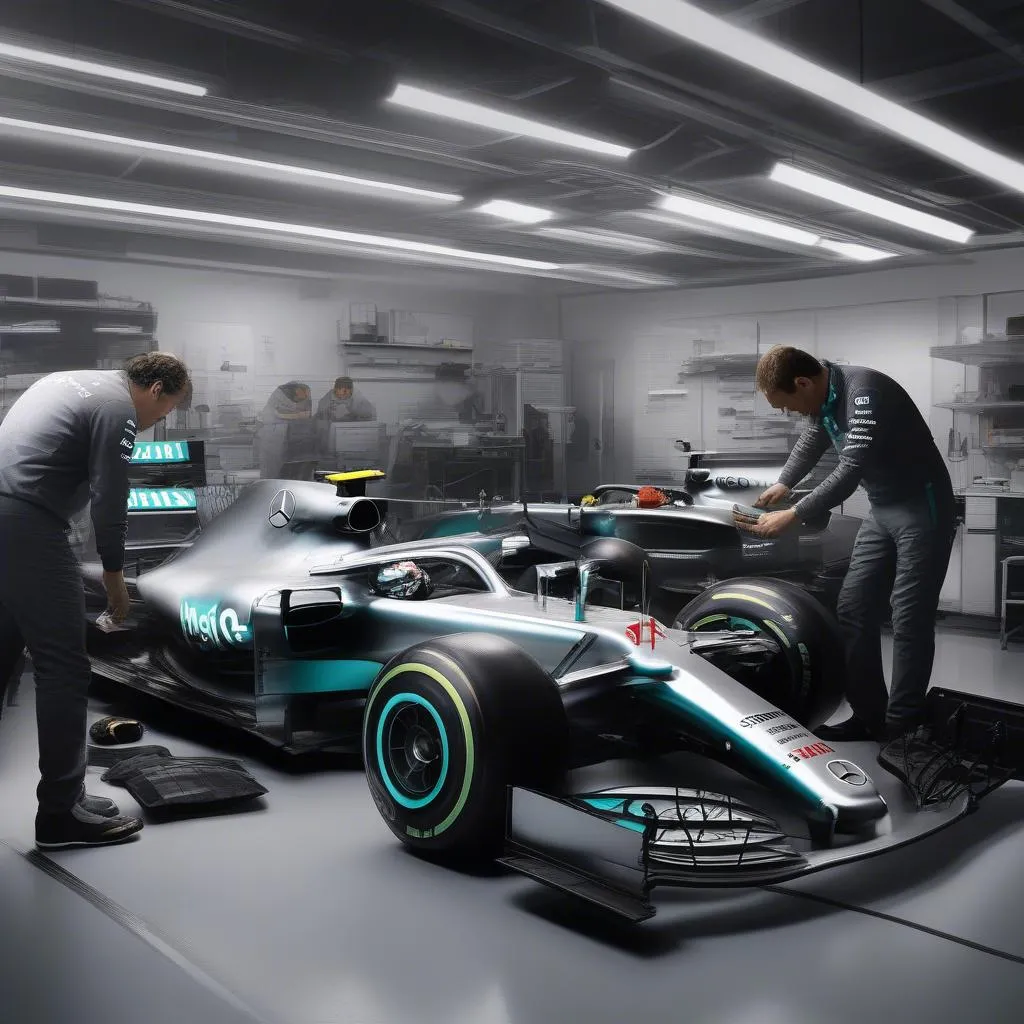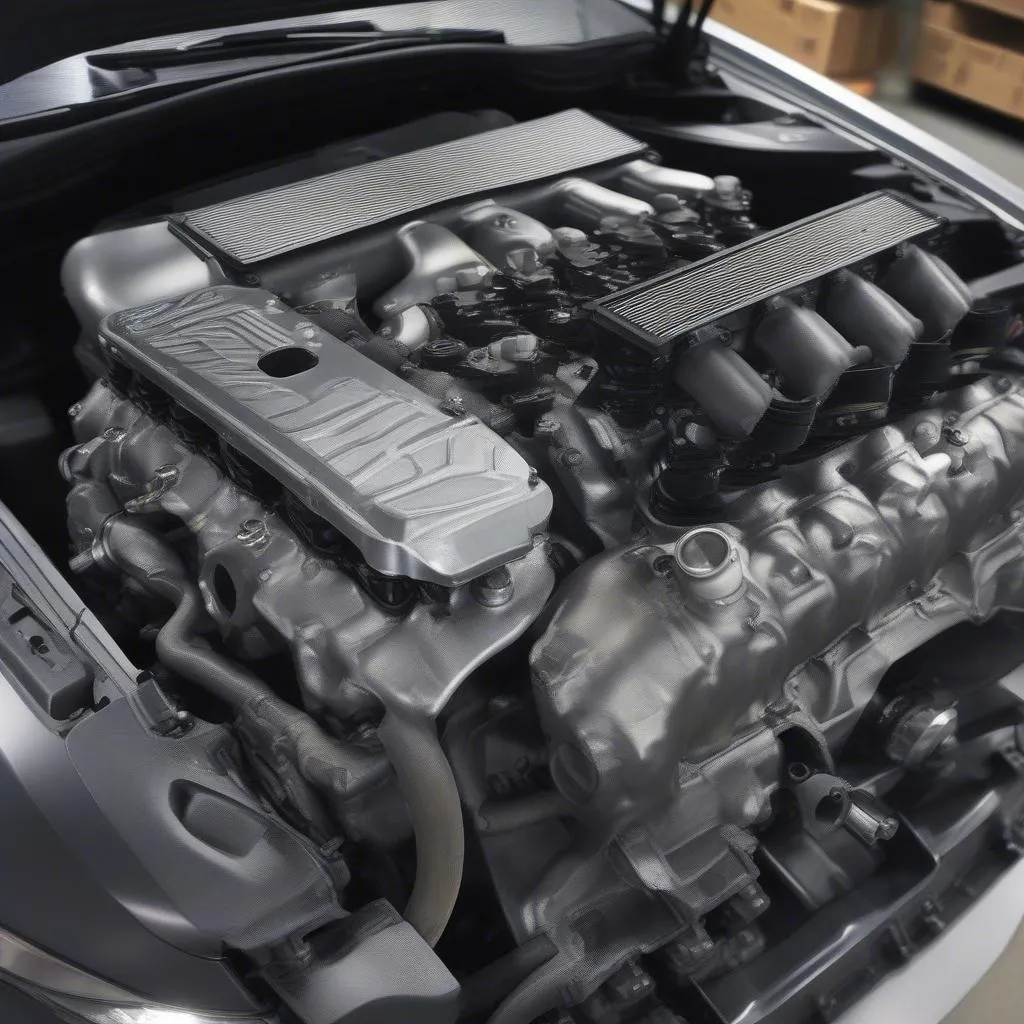The 2022 Formula 1 season saw Mercedes struggle to match the pace of Red Bull and Ferrari. Their car, the W13, suffered from a phenomenon known as “porpoising,” bouncing violently on the straights due to aerodynamic instabilities. This naturally led many fans to ask: “Can Mercedes fix their F1 car?”
Understanding the Problem: Why Was the Mercedes F1 Car So Hard to Fix?
The new regulations introduced in 2022 aimed to promote closer racing. However, these changes, particularly the return to ground-effect aerodynamics, had unintended consequences. Mercedes, despite their dominant run in the previous era, found themselves grappling with a car that was unpredictable and difficult to handle.
Identifying the root cause of Mercedes’ issues wasn’t straightforward. The porpoising was just a symptom of a more complex problem. The new regulations made finding the optimal aerodynamic setup extremely challenging.
“It’s like trying to hit a moving target,” explained former F1 driver and respected commentator, David Wilson, in his book “The Art of Ground Effect.” “The teams are constantly learning about these cars, and the development race is fierce.”
The Road to Recovery: How Mercedes Tackled Their F1 Car Issues
Mercedes embarked on a relentless development program to address the W13’s shortcomings. They experimented with various setup changes, floor modifications, and even a controversial “no sidepod” design. While these efforts yielded some improvements, the team acknowledged that a complete fix would require a significant overhaul.
 Mercedes F1 engineers working
Mercedes F1 engineers working
“We understand the problem, but the solution is not a simple one,” said a Mercedes spokesperson. “It requires time, resources, and a deep understanding of the new regulations.”
What Tools Did Mercedes Use to Diagnose Their F1 Car Problems?
Like any high-performance machine, Formula 1 cars are equipped with sophisticated sensors and data logging systems. These systems provide engineers with a wealth of information about the car’s behavior, including aerodynamic performance, suspension movement, and tire data.
Mercedes likely relied heavily on this data to diagnose the W13’s issues. Tools such as Computational Fluid Dynamics (CFD) simulations and wind tunnel testing also played crucial roles in understanding the car’s aerodynamic shortcomings.
For those interested in learning more about automotive diagnostics and how these principles apply to everyday vehicles, CARDIAGTECH offers a range of resources and products to enhance your understanding.
Will Mercedes’ F1 Car Be Fixed?
While there’s no easy answer in the ever-evolving world of Formula 1, Mercedes has a history of bouncing back from setbacks. Their dedication to innovation and engineering excellence suggests that they will eventually overcome the challenges posed by the new regulations.
For more insights into the ongoing developments in Formula 1 and Mercedes’ journey back to competitiveness, check out our articles on when Mercedes will fix their F1 car and a more general overview of the Mercedes F1 fix.
Frequently Asked Questions:
1. What is porpoising in F1?
Porpoising is the violent bouncing motion that some F1 cars experience, particularly on straights, due to aerodynamic instability. This is often caused by the ground-effect aerodynamics creating a vacuum under the car, pulling it down to the track surface and then releasing, causing a cyclical bouncing effect.
2. What is ground-effect aerodynamics?
Ground-effect aerodynamics refers to the use of the car’s underbody and floor to generate downforce. By creating a low-pressure area between the car’s floor and the track surface, a suction effect is created, pulling the car down and increasing grip. The 2022 F1 regulations reintroduced ground-effect aerodynamics to the sport.
3. What software do F1 teams use to analyze car data?
F1 teams use highly sophisticated custom software to analyze the vast amounts of data collected from their cars. These software packages process data from sensors measuring various parameters, including aerodynamics, engine performance, tire temperatures, and driver inputs. This data analysis is crucial for understanding car performance and making setup changes.
Conclusion
The challenges faced by Mercedes highlight the complexities of Formula 1 and the constant pursuit of performance. While the team faced a difficult start with their 2022 car, their commitment to innovation and engineering excellence suggests that they will continue to strive for improvements and a return to competitiveness. The world of F1 is constantly evolving, and Mercedes’ journey to overcome these challenges is just beginning.

